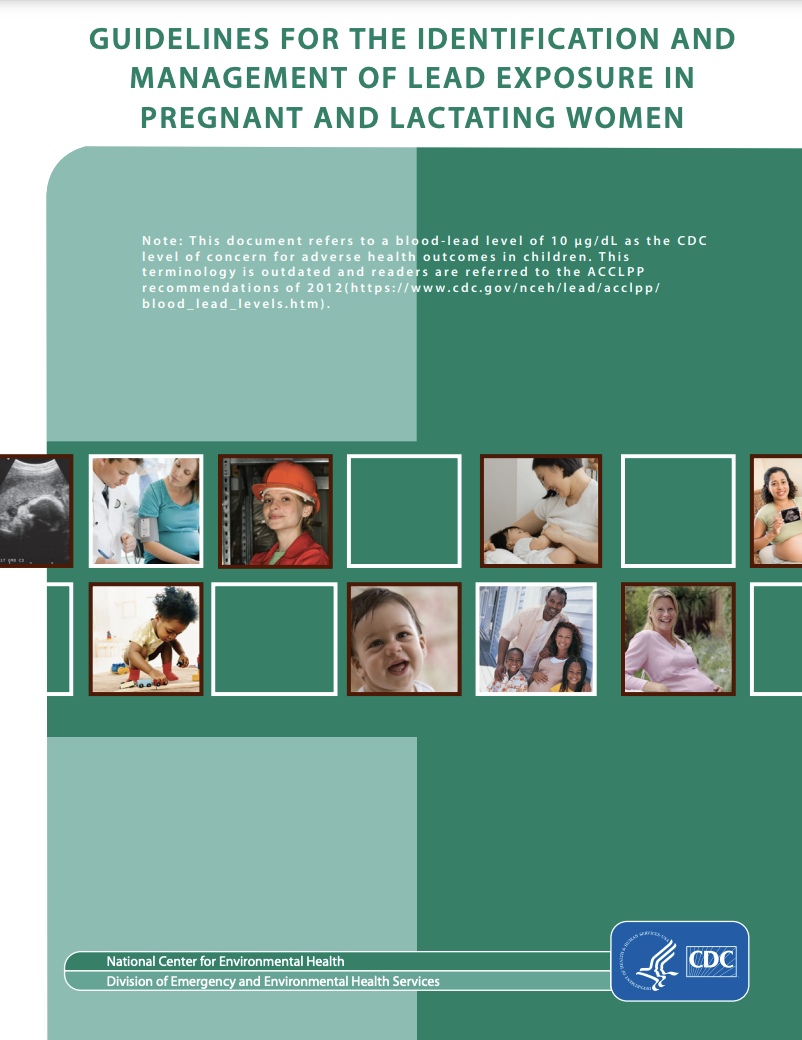Guidelines for the identification and management of lead exposure in pregnant and lactating women
This document provides guidance based on current knowledge regarding blood lead testing and follow-up care for pregnant and lactating women with lead exposure above background levels. Because there is no apparent threshold below which adverse effects of lead do not occur, CDC has not identified an allowable exposure level, level of concern, or any other bright line intended to connote a safe or unsafe level of exposurefor either mother or fetus. Instead, CDC is applying public health principles of prevention in recommending follow-up blood lead testing and interventions when prudent. These guidelines recommend follow-up activities and interventions beginning at blood lead levels (BLLs) ≥5 µg/dL in pregnant women. Unlike the BLL level of concern of 10 µg/dL for children, which is a communitywide action level, a BLL of 5 µg/dL in pregnant women serves a different purpose: it flags the occurrence of prior or ongoing lead exposure above background levels, which may not otherwise be recognized. The vulnerability of a developing fetus to adverse effects and the possibility of preventing additional exposures postnatally justify intervention for pregnant women showing evidence of lead exposure above background levels.
